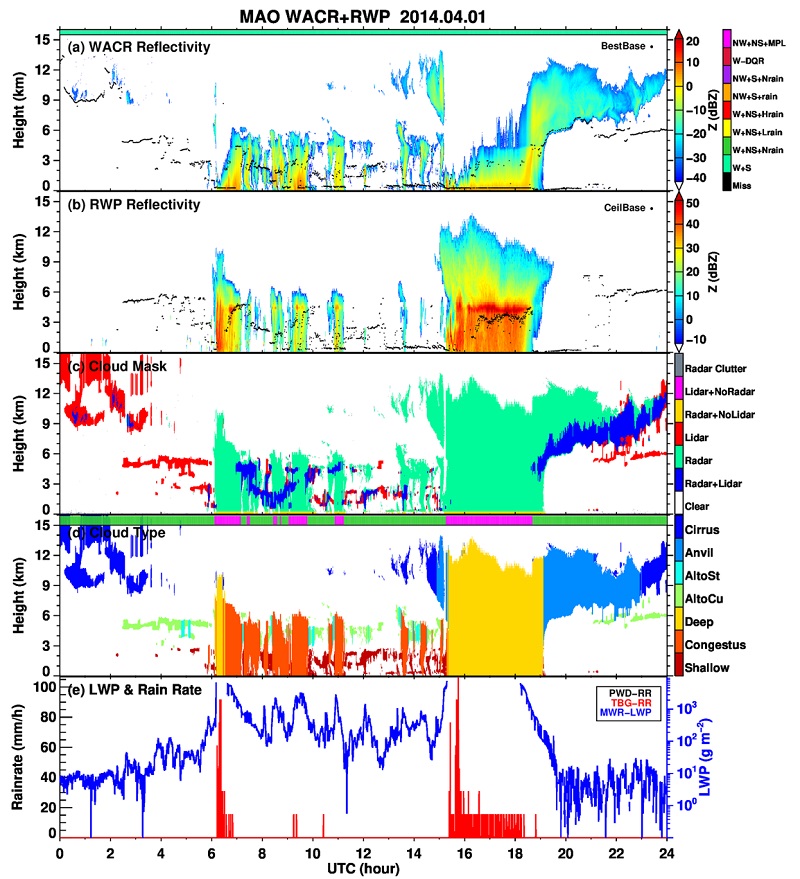Merged Multisensor Cloud-Precipitation Mask and Cloud Type Data Now Available for GoAmazon2014/15
Published: 6 November 2018

A newly available ARM principal investigator product can be used by scientists to better characterize cloud and precipitation profiles of all conditions, including during heavy precipitation from storms, as well as to validate model simulations.
The Merged RWP-WACR-ARSCL Cloud Mask and Cloud Type data set for the GoAmazon2014/15 field campaign has been released for the years 2014 to 2015. It includes cloud type, cloud top height, radar reflectivity, vertical velocity, and atmospheric states for all conditions.
This data product combines the Radar Wind Profiler (RWP) calibrated radar reflectivity data with the W-band ARM Cloud Radar (WACR) ARSCL data set to improve cloud mask in precipitating clouds and to provide cloud-type profile classification. WACR-ARSCL cloud profiles were replaced with RWP profiles during substantial precipitation periods where severe attenuation affects accuracy of WACR cloud-top detections. The merged RWP-WACR-ARSCL cloud mask is then used to produce cloud-type profile classification.
The cloud-type classification includes a total of seven cloud types:
- shallow cumulus
- congestus
- deep convective clouds
- altocumulus
- altostratus
- cirrostratus
- cirrus.
The merged data set provides an improved depiction of all cloud types—in particular, better characterization of shallow, congestus, and deep convective clouds compared to the standard WACR-ARSCL VAP.
Scientists can begin using the merged data set now. The merged data product contains all available records from the GoAmazon2014/15 field campaign. To share your experience or to ask questions, contact Zhe Feng or Scott Giangrande, the principal investigators who shared these data.
Users can access the data set from the ARM Data Center. (Go here to create an account and download the data.) To cite this data set, please use doi:10.5439/1462693.
Keep up with the Atmospheric Observer
Updates on ARM news, events, and opportunities delivered to your inbox
ARM User Profile
ARM welcomes users from all institutions and nations. A free ARM user account is needed to access ARM data.


















